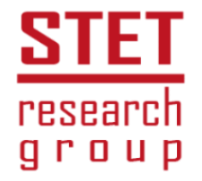Flow boiling and condensation of refrigerants in channels and innovative geometries
Flow boiling and condensation inside small diameter channels finds applications in compact heat exchangers, heat pipes, cooling of electronics, refrigeration applications, etc. For an accurate design of microchannels heat exchangers, heat transfer and pressure drop models must be developed and validated against experimental databases.
This research line is devoted to the experimental investigation of two-phase heat transfer, pressure drop and flow visualizations inside small diameter channels to understand the physical mechanisms involved during condensation and flow boiling. Since the hydrofluorocarbons (HFCs) currently used in refrigeration systems are now facing a phase-down because of their contribution to the greenhouse effect, new refrigerants such as pure hydrofluoroolefins (HFOs) or HFCs/HFOs mixtures need to be explored as potential substitutes due to their low flammability, non-toxicity, low global warming potential (GWP). The heat transfer performance of these new low-GWP fluids must be investigated.
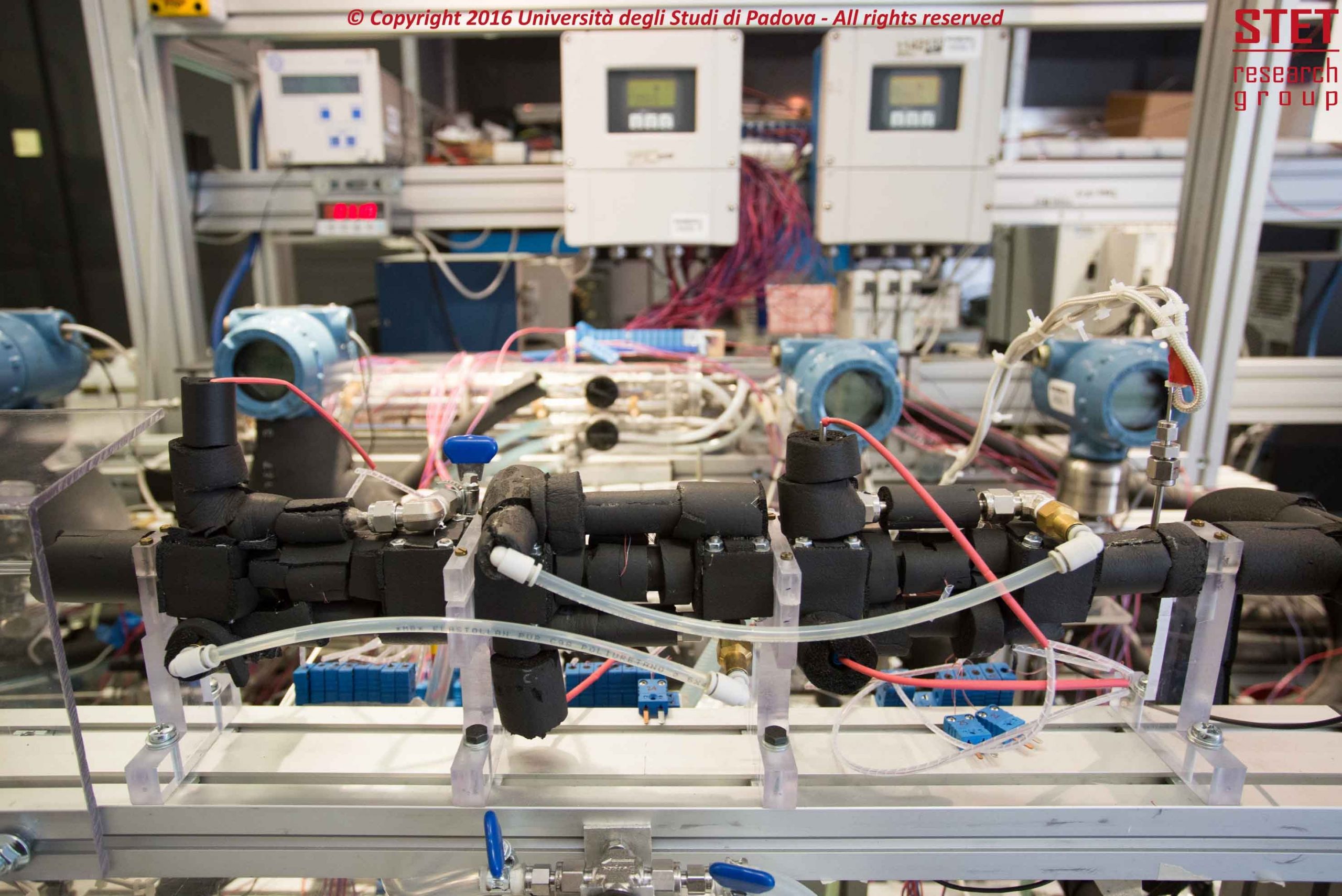
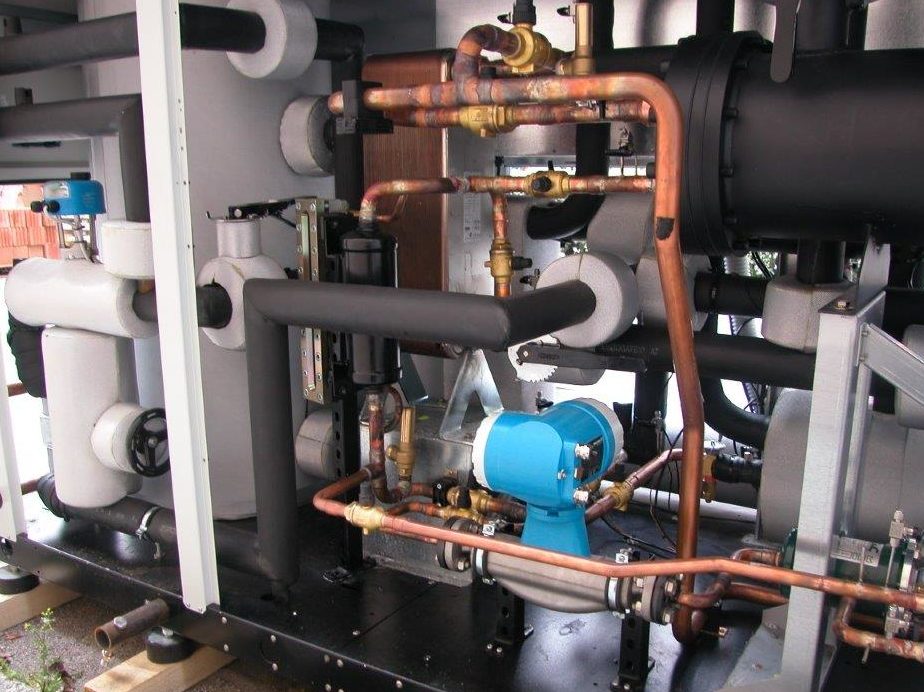
Heat pumps and refrigeration systems using low-GWP refrigerants
Building heating systems are responsible of anthropogenic greenhouse gases emissions in the atmosphere. Heat pump systems operating with low global warming potential (GWP) refrigerants are a possible solution to replace fossil fuel fired boilers reducing the primary energy consumption.
The following topics are covered. Model and design of heat pumps for the optimization of the system and of the working strategy and for the realization of more efficient systems. Heat pumps working with two external sources as air and ground (dual source heat pumps). Design of heat exchangers with reduced refrigerant charge. Solar Assisted Heat Pumps (SAHPs) consisting in heat pumps working with the solar source as the low temperature thermal source.
Natural fluids for air-conditioning and refrigeration applications
The use of natural refrigerants (hydrocarbons, carbon dioxide) is a good opportunity to develop environmentally friendly Heating, Ventilation and Air Conditioning (HVAC) equipment, since the direct effect of the refrigerant on the anthropogenic global warming is almost completely avoided, while the indirect effect can be reduced by exploiting the favorable thermodynamic properties of these fluids.
The research line is described by the following main topics. Experimental investigation of a water-water heat pump working with propane. Domestic heat pump system (solar assisted) working with carbon dioxide. Numerical modeling of carbon dioxide systems for commercial refrigeration.
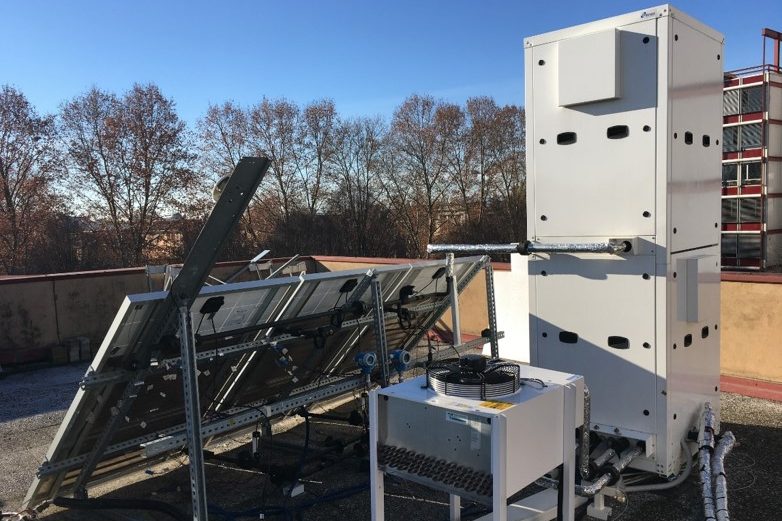
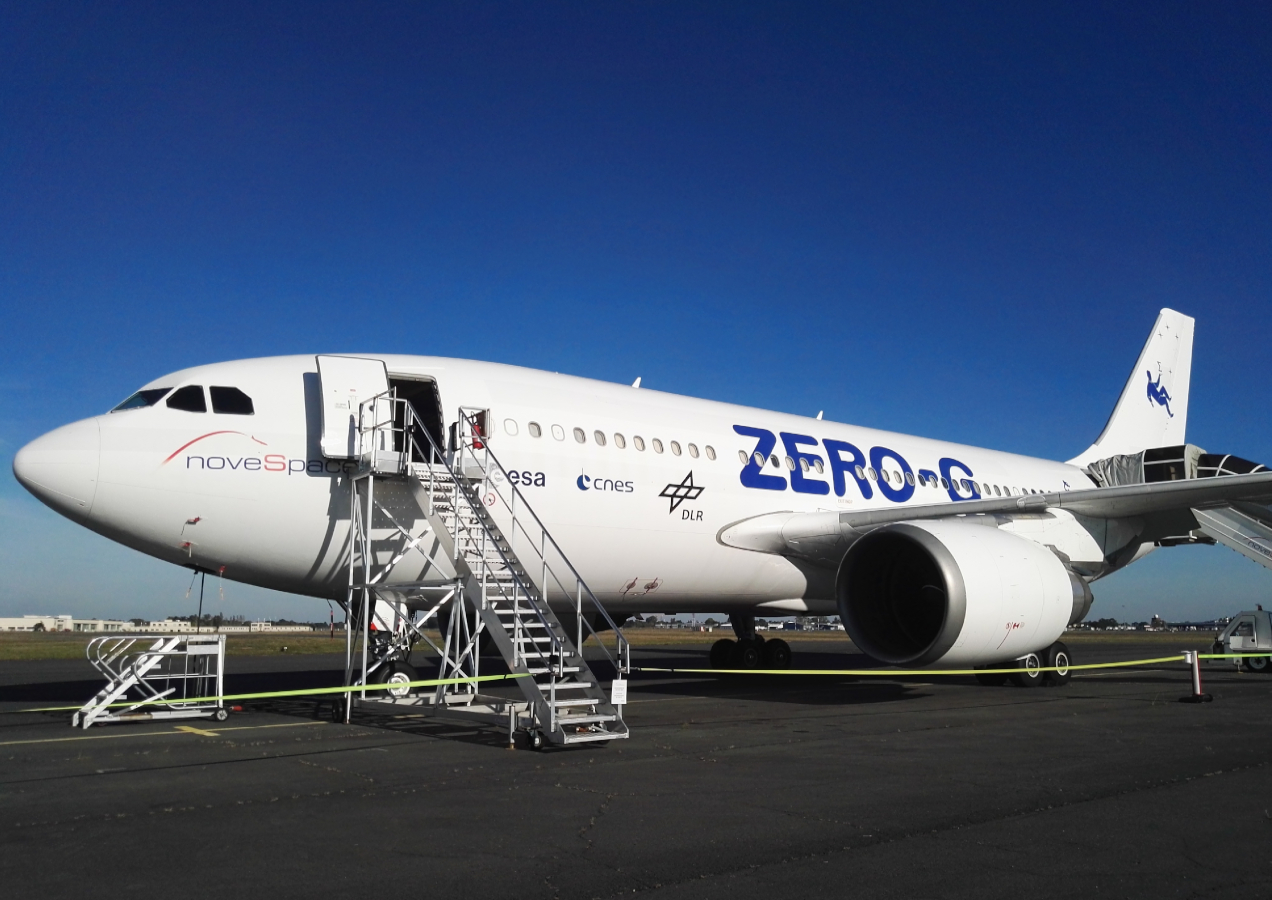
Condensation in microgravity conditions
The possible applications of two-phase systems for thermal control in space applications (e.g. satellites) requires to understand the effect of gravity during condensation. The STET group is involved in a project cofounded by ESA (European Space Agency) which regards the study of condensation in microgravity conditions. The STET group has coordinated two micro-gravity condensation experiments performed during the 62nd and 70th ESA parabolic flight campaign.
Collaborations:
LAPLACE laboratory (University of Toulouse III – Paul Sabatier), the Microgravity Research Center (Université libre de Bruxelles) and with the support of the ESA SciSpacE (Science in Space Environment) MAP (Microgravity Application Programme) ENCOM (ENhanced COndensers in Microgravity) project coordinated by prof. Davide Del Col.
Dropwise condensation on surfaces with modified wettability
The research is focused on the promotion of dropwise condensation (DWC) in place of the traditional filmwise condensation as a passive solution to enhance the heat transfer during condensation of steam and humid air. Understanding the mechanisms governing DWC on modified wettability surfaces is crucial for a wide range of energy applications (e.g. thermolectric power plants). In fact, the condensation heat transfer enhancement enables the possibility of more efficient heat exchangers, with advantages from both the economic and the energetic point of view.
The research line is focused on fabricating innovative coatings with controlled wettability for DWC promotion, investigating the phenomenon by means of heat transfer measurements and optical analyses, and developing predictive models.
Collaborations:
Nanomaterials Engineering Group (Department of Industrial Engineering), Surfaces and Interfaces Physics Laboratory – LaFSI (Department of Physics and Astronomy).
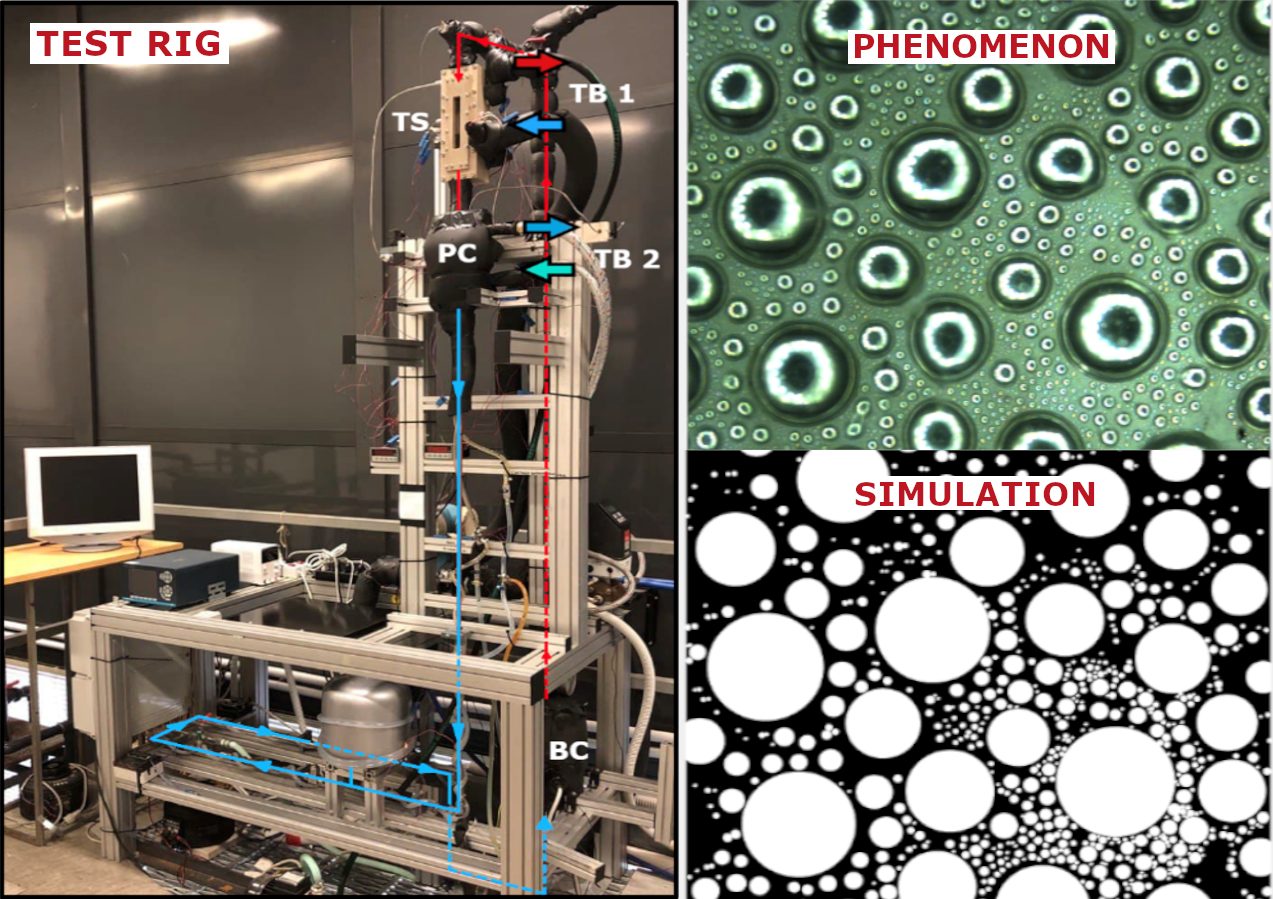
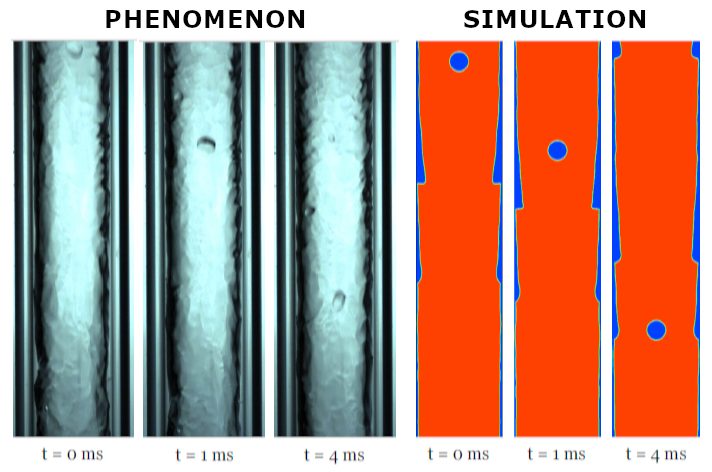
Computational thermo-fluid dynamics of two-phase flow and heat transfer
The increase of the computational capabilities of computers in the recent years has made nowadays possible the implementation of numerical models for the simulation of multiphase flows with different degrees of complexity in commercial or open source CFD codes.
The present research line concerns the numerical simulation of two-phase flow by means of the Volume Of Fluid (VOF) method implemented in the commercial CFD code Ansys-Fluent and in the open source code OpenFoam. The most relevant feature of the VOF method is the ability of tracking the motion of the interface between two immiscible fluids. CFD simulations are validated by comparison to the experimental results, both with regard to flow visualisation and heat transfer measurements.
Solar energy conversion and thermal energy storage
The improvement of the conversion efficiency is a key target of the research on renewable energy technologies. Solar energy is the most widespread resource and solar systems are widely used for energy applications. This research line is focused on solar energy conversion by using thermal (T) collectors, photovoltaic (PV) modules and hybrid (PV-T) systems.
In particular, the following research topics are investigated. Measurements and modelling of solar radiation. Experimental evaluation of solar thermal collectors. Experimental study of a parabolic trough linear concentrating system. Thermal energy storage using phase change materials (PCMs) as storage media to cope with the intermittency of solar energy.
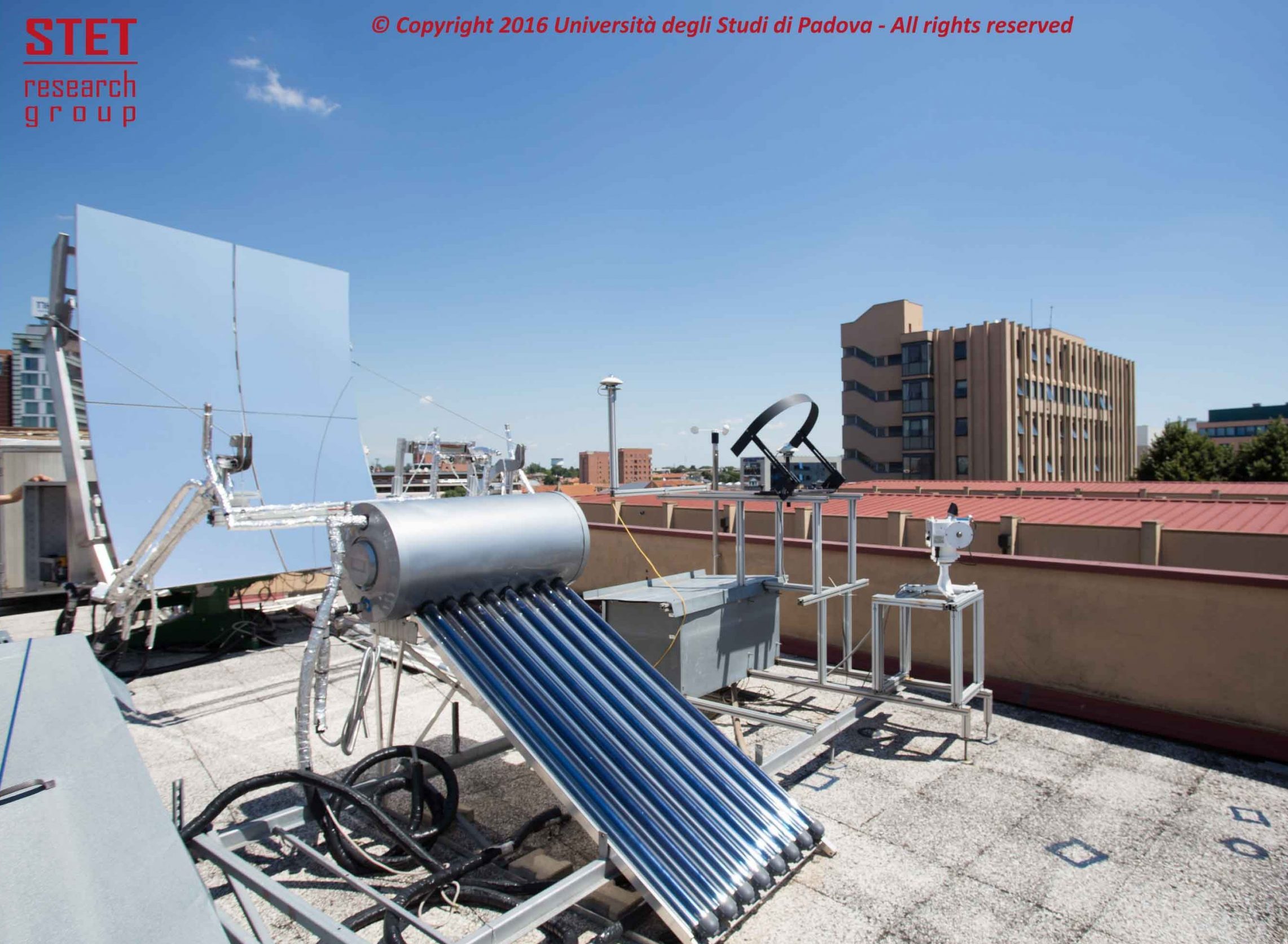
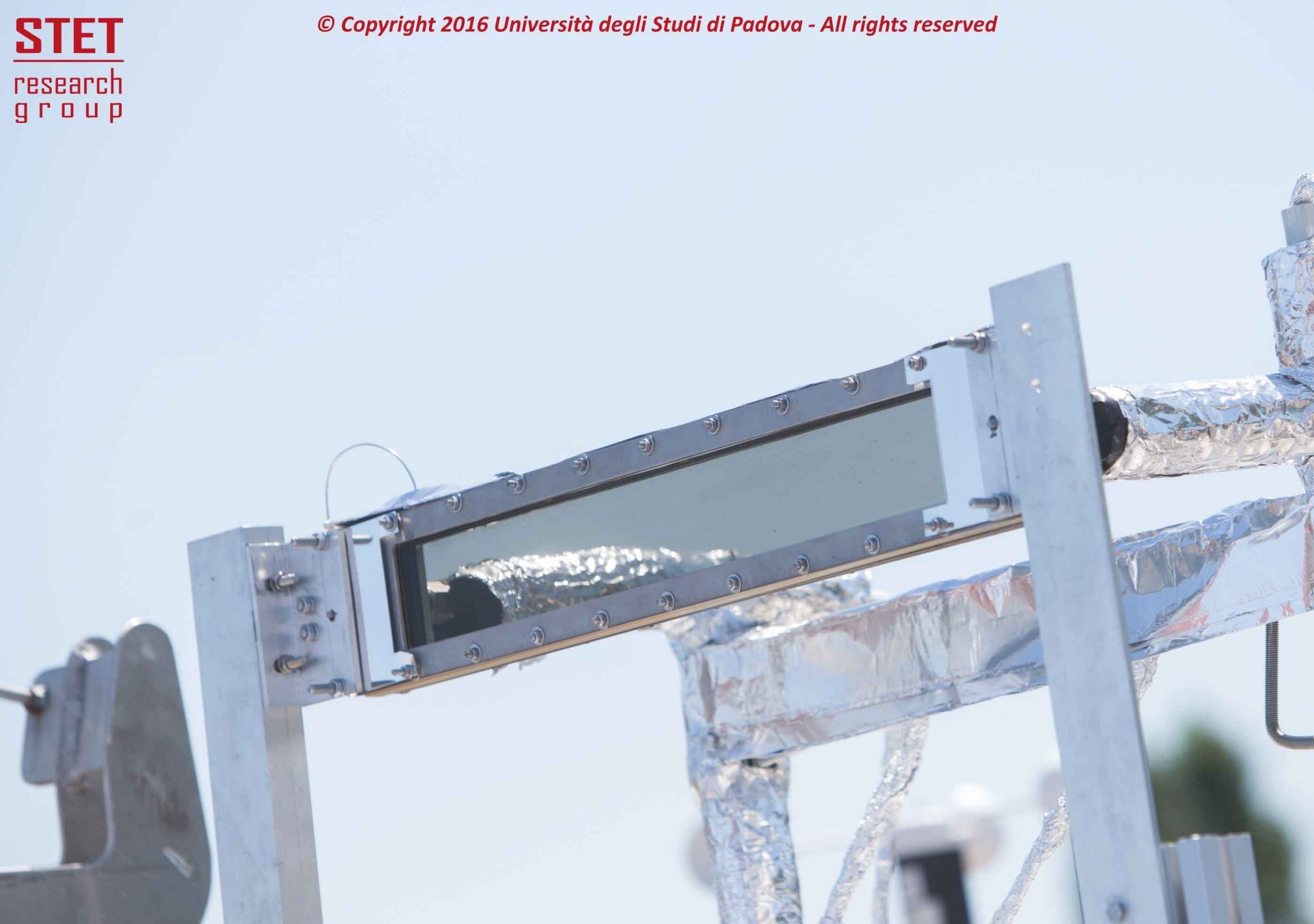
Nanofluids for solar energy conversion
Recently, nanofluids have been proposed for the absorption of solar radiation. Very low nanoparticle concentrations can make the fluid almost completely opaque to the solar radiation, thus nanofluids can be used for the “direct” absorption of the radiation in a new generation of solar collectors.
Collaborations:
Nanostructures & Optics Laboratory (Department of Chemical Sciences, University of Padova).
Next generation inverse cycles using CO2 based mixtures as refrigerant
The project aims at developing efficient, eco-sustainable, and cost-effective CO2-based mixture inverse cycles for residential heating and cooling through the Lorenz cycle concept, potentially integrated, but not limited to, 5th generation district heating and cooling and renewable source inverse cycles.
Coordinator: dott. Marco AZZOLIN – Dipartimento di Ingegneria Industriale-Università degli Studi di PADOVA
Partner: Università degli Studi di FIRENZE
Proposal: PRIN 2022 – Decreto Direttoriale n. 1385 del 01/09/2023
Duration: 30/11/2023 – 29/11/2025 (24 months)
Total budget: € 224.190,00
This project has been funded by the European Union – Next Generation EU

